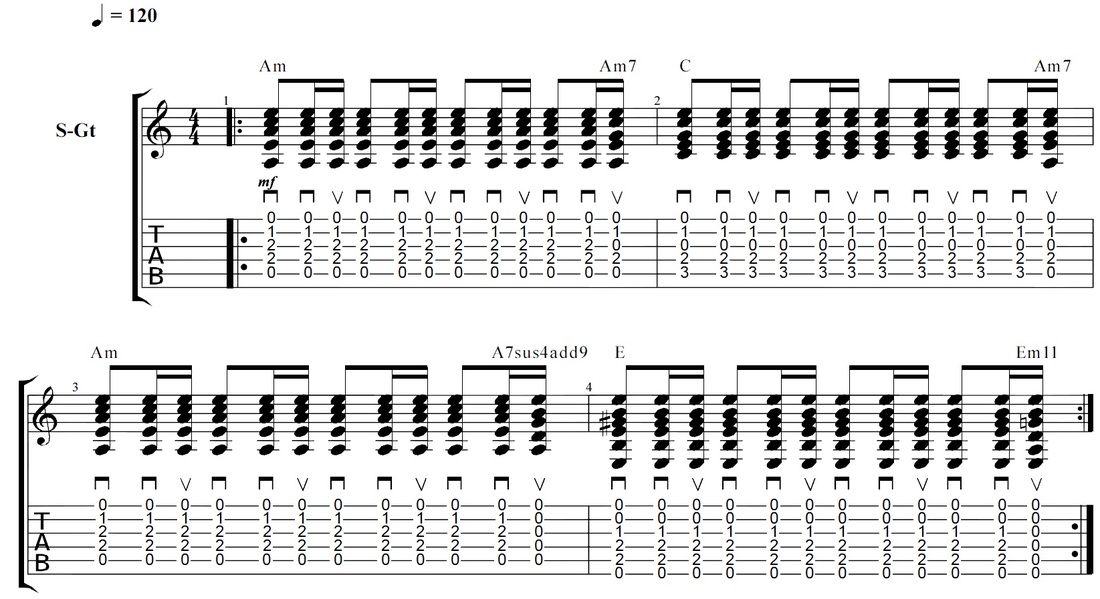Rhythmic patterns piano lessons technique
Rhythmic Patterns Piano Lessons Technique. Then see if they can count and clap it back to you. Music appreciation · piano lessons rhythmic patterns (2) december 4, 2019 december 2, 2019 admin. Rhythm tells us how many notes to play in a measure and how to count them. Rhythm groups note durations together to make up the needed beats in each measure.
 Rhythm Rounds A Engaging Game for Music Class SillyOMusic From sillyomusic.com
Rhythm Rounds A Engaging Game for Music Class SillyOMusic From sillyomusic.com
Pitch is the linear movement of the notes up and down the keyboard. Play piano with better timing and tempo; Using your ear to recognize intervals. Tempo tells us how fast or slow to play these beats throughout our piece. This can be a great way to go and get you started on sounding more rhythmical. Get the pdf cheat sheet + bonus video here:
The best piano “rhythm patterns” for beginners av2 0 comments.
It�ll teach you the theory behind why all these chords work well together to help you write songs, compose, and arrange music. Pitch is the linear movement of the notes up and down the keyboard. Make sure you understand these basic rhythms and their values. If you play them on the piano (or any other instrument), use any finger you want to. ← intermediate blues piano lessons : Get the pdf cheat sheet + bonus video here:
 Source: pianosafari.com
Source: pianosafari.com
They give students a good mix of rhythms to work with that will likely show up in their music right away. Rhythm groups note durations together to make up the needed beats in each measure. Pitch is the linear movement of the notes up and down the keyboard. Draw a card from the top of the pile, being careful not to let your partner see it. Most of the piano books we use don’t use eighth notes right away.
 Source: pianochampion.com
Source: pianochampion.com
The first rhythm pattern we’re going to learn is the dotted quarter note followed by an 8th note. Whole note = 4 beats. Pitch is the linear movement of the notes up and down the keyboard. (you can copy, paste and print them if it�s easier for you.) exercise 1: Set 2 is very basic and i always use them to teach beginning students introductory note values.
 Source: pinterest.com
Source: pinterest.com
Then see if they can count and clap it back to you. I have my students help me build a hopscotch pattern for the song in question. (you can copy, paste and print them if it�s easier for you.) exercise 1: Rhythm is most often explained as durations between the notes. Draw a card from the top of the pile, being careful not to let your partner see it.
 Source: pianogroove.com
Source: pianogroove.com
Here are some exercises to help you practice learning about rhythm. These values will change when you learn other time signatures where the number on the bottom is not a 4 (like 6/8 time for example), but as a beginner, you should get really comfortable with the basic 4/4, 2/4, and 3/4 time signatures first. Here is a second video on how you can jazz up a simple tune with different varieties of rhythmic patterns and melodic embellishments! Dotted half note = 3 beats. This can be a great way to go and get you started on sounding more rhythmical.
 Source: milehighshred.com
Source: milehighshred.com
You can review it and then see how many notes you can remember on your own. (you can copy, paste and print them if it�s easier for you.) exercise 1: Rhythmic dissonance in blues piano; Then see if they can count and clap it back to you. Relaxing your physical posture, the correct way to sit at the piano, and get the most of your motions into the piano.
 Source: sillyomusic.com
Source: sillyomusic.com
When we asked piano teachers to submit their tips and tricks for improving piano student rhythmic understanding and accuracy we just loved the creative ideas we received! These values will change when you learn other time signatures where the number on the bottom is not a 4 (like 6/8 time for example), but as a beginner, you should get really comfortable with the basic 4/4, 2/4, and 3/4 time signatures first. Each row of the hopscotch is a note, so a quarter. Hear the intervals in your head. Whole, half and quarter notes.
 Source: pinterest.com
Source: pinterest.com
While pitch is what notes we are playing and what direction they go, rhythm is how you play those. Unique sounding chord styles could be explored using this technique where we focus on triplets and sixteenth note patterns. (you can copy, paste and print them if it�s easier for you.) exercise 1: You can review it and then see how many notes you can remember on your own. Whole notes get 4 beats each.
 Source: jeffsipemusic.com
Source: jeffsipemusic.com
To count this specific pattern we give one and ½ beats to the dotted quarter note, and then one ½ of a beat to the eighth note. Then see if they can count and clap it back to you. Play through each rhythm 2 to 4 times, and end by playing the passage 2 to 4 times as written; Draw the note symbol and then it’s name and value. Understanding the different rhythmic values and how to count through them is extremely helpful.
 Source: instructables.com
Source: instructables.com
There are two main ways you can learn to play rhythm patterns for chords. The first rhythm pattern we’re going to learn is the dotted quarter note followed by an 8th note. They give students a good mix of rhythms to work with that will likely show up in their music right away. There are two main ways you can learn to play rhythm patterns for chords. Rhythm groups note durations together to make up the needed beats in each measure.
 Source: pianogroove.com
Source: pianogroove.com
The first rhythm pattern we’re going to learn is the dotted quarter note followed by an 8th note. To count this specific pattern we give one and ½ beats to the dotted quarter note, and then one ½ of a beat to the eighth note. Draw a card from the top of the pile, being careful not to let your partner see it. Rhythm tells us how many notes to play in a measure and how to count them. If you play them on the piano (or any other instrument), use any finger you want to.
 Source: turolessons.com
Source: turolessons.com
(you can copy, paste and print them if it�s easier for you.) exercise 1: A nice analogy here would be morse code and the. Pitch is the linear movement of the notes up and down the keyboard. Quarter note = 1 beat. Rhythm tells us how many notes to play in a measure and how to count them.
 Source: pinterest.com
Source: pinterest.com
Then see if they can count and clap it back to you. Hear the intervals in your head. Want to learn even more rhythm patterns like the heartbeat pattern?checkout piano for singer/songwriters: When we asked piano teachers to submit their tips and tricks for improving piano student rhythmic understanding and accuracy we just loved the creative ideas we received! This can be a great way to go and get you started on sounding more rhythmical.
 Source: pinterest.co.kr
Source: pinterest.co.kr
Half note = 2 beats. Understanding the different rhythmic values and how to count through them is extremely helpful. Tempo tells us how fast or slow to play these beats throughout our piece. Pitch is the linear movement of the notes up and down the keyboard. Set 1 includes eighth notes and i try to introduce those early on as well.
 Source: pinterest.co.kr
Source: pinterest.co.kr
This should help you play by ear. These values will change when you learn other time signatures where the number on the bottom is not a 4 (like 6/8 time for example), but as a beginner, you should get really comfortable with the basic 4/4, 2/4, and 3/4 time signatures first. Learn the patterns as is. This last exercise is a little advanced for beginners. Then see if they can count and clap it back to you.
 Source: pianoinsight.com
Source: pianoinsight.com
Dotted half note = 3 beats. One of my favorite ways to practice developing a sense for rhythm in notation is by writing the notes out with a pencil and paper. Today’s video we’re going to cover:secti. Half notes get 2 beats each. Tempo tells us how fast or slow to play these beats throughout our piece.
 Source: pinterest.com
Source: pinterest.com
This should help you play by ear. This should help you play by ear. While pitch is what notes we are playing and what direction they go, rhythm is how you play those. This can be a great way to go and get you started on sounding more rhythmical. When we asked piano teachers to submit their tips and tricks for improving piano student rhythmic understanding and accuracy we just loved the creative ideas we received!
 Source: pinterest.com.au
Source: pinterest.com.au
Half notes get 2 beats each. Understanding the different rhythmic values and how to count through them is extremely helpful. You can take a pattern, learn it, practice it and play it exactly as is. You can review it and then see how many notes you can remember on your own. In this piano arpeggio tutorial, we build rhythm patterns using a simple technique called “rhythmic devices” and then play them in various shapes on the piano.
 Source: youtube.com
Source: youtube.com
I have my students help me build a hopscotch pattern for the song in question. 0:00 introduction 0:55 chord progression 1:17 introducing. Take a look at this lesson on tempo markings if you need a refresher. Draw a card from the top of the pile, being careful not to let your partner see it. Get the pdf cheat sheet + bonus video here:
If you find this site adventageous, please support us by sharing this posts to your favorite social media accounts like Facebook, Instagram and so on or you can also save this blog page with the title rhythmic patterns piano lessons technique by using Ctrl + D for devices a laptop with a Windows operating system or Command + D for laptops with an Apple operating system. If you use a smartphone, you can also use the drawer menu of the browser you are using. Whether it’s a Windows, Mac, iOS or Android operating system, you will still be able to bookmark this website.





